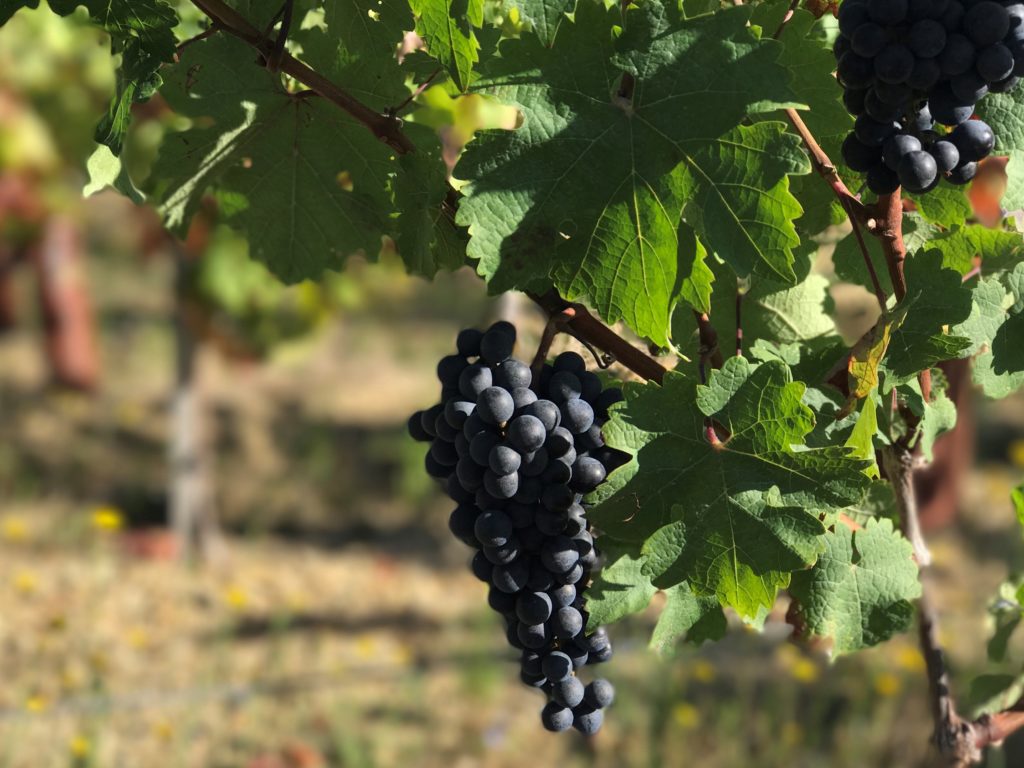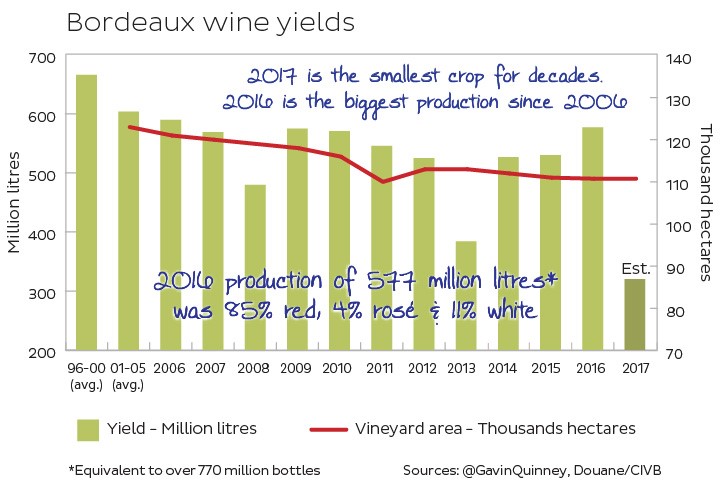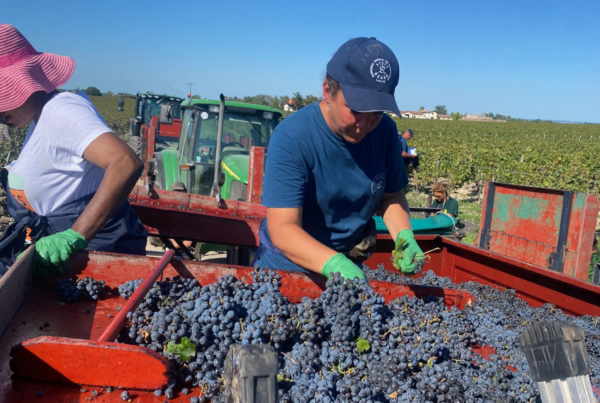
The 2017 harvest in France is forecast to be the smallest since 1945. In the post below, Bordeaux grower, winemaker and writer Gavin Quinney (@GavinQuinney) offers wine lovers 10 things to bear in mind when considering the figures.
When Bordeaux sneezes, France catches a cold. As the white harvest begins at leading chateaux this week, and before a red grape has even been picked, here’s an update to the one statistic that the 2017 vintage will be remembered for: it’s a shockingly small crop, which in Bordeaux is down to that sharp frost in late April.
France saw a small harvest in 2016, in part down to frost and hail in other parts of the country, but the overall output was saved by Bordeaux having its biggest crop since 2006, with 577 million litres being produced. There was no frost or hail of any consequence here in 2016 and the all-important flowering was sensational. I’ve rarely seen so many healthy bunches and the 10% increase on the 10-year average of 529 million litres was no surprise. And the quality, thanks to a bone dry summer, was undoubtedly there too.

2017 is a different story though. It’s another smallish vintage across France – and across Europe too, notably in Italy – but the likelihood of a much reduced crop in Bordeaux, which covers 25% of all Appellation Contrôlée vineyards in France, has a significant impact on the figures. It’s early to say but if we guess at a Bordeaux yield of around 320 million litres, that’s 40% down on the 10-year average and 45% down on last year. (It could, I think, be worse than that.)
The officials at France Agrimer have recently updated their forecast of national volumes and have been widely quoted by Agence France Presse. “The French agriculture ministry said output was expected to total 37.2m hectolitres – 18% less than 2016 and 17% below the average over the past five years. The 2016 harvest was one of the poorest (sic) in 30 years. This year’s harvest will be “the smallest since 1945” – and so on.
Mix together a feeble crop, dodgy weather and the increasingly weak sterling and we’ve got a perfect storm brewing. “Cost of European wine is set to soar after extreme weather decimates crops, with French officials warning it could be the worst harvest since WWII” was the headline in the Daily Mail on Monday 28 August. “Bad harvest will hit wine lovers in pocket” was the shorter option for The Times.
They may be right but here are ten things for wine lovers to bear in mind:
- Bordeaux is 89% red and thanks to three very good, successive vintages, there are plenty of good things to come out of Bordeaux before the impact of a small 2017 is felt.
- The 2015s have, in many cases, only just been bottled and 2016 offers huge potential at all levels, and there’s a lot of it. Let alone the back catalogue of stock.
- Bulk wine prices for the new vintage will increase in line with supply and demand, and sometimes at odds with quality. That happened in 2013 for another small crop.
- For estate-grown wines, the Bordelais are too canny to put prices up when quality is mixed and volumes are low. Much better to jump on the bandwagon of a strong, reputable vintage with plenty of wine to sell. 2009, 2010 and 2016 are good examples.
- Don’t be misled by references to harvests being the ’worst’ or ’poor’. They might simply be referring to quantity, not quality. These words often get lost in translation.
- Unlike the small, late 2013 vintage, 2017 is the most precocious growing season since 2011, and after a sunny August the prospects for this relatively early harvest are very promising. Assuming you have grapes.
- The impact of the 2017 frost in Bordeaux is not evenly distributed across the region. There are growers and chateaux that have lost 100% while others – sometimes just up the road – who have lost nothing. And some, like us, about 50-50. See my Bordeaux frost map for a guide, though I’ll cover this in more detail anon.
- Many of the top, say, 150 chateaux are so well located – for example on higher ground in St-Emilion or Pomerol or adjacent to the Gironde estuary in St-Julien or Pauillac – that around 75% of them have had no or minimal damage to vines in the plots that go into their Grand Vin (or ’Château’ wine).
- There are always regions, sub-regions and, of course, producers across Bordeaux, across France and across Europe that do better in any given vintage than others, for quantity and quality. That’s viticulture, especially when it comes to dry farming – as with all French appellations.
- The exchange rate might, one day, get better.
[mc4wp_form id=”18204″]




